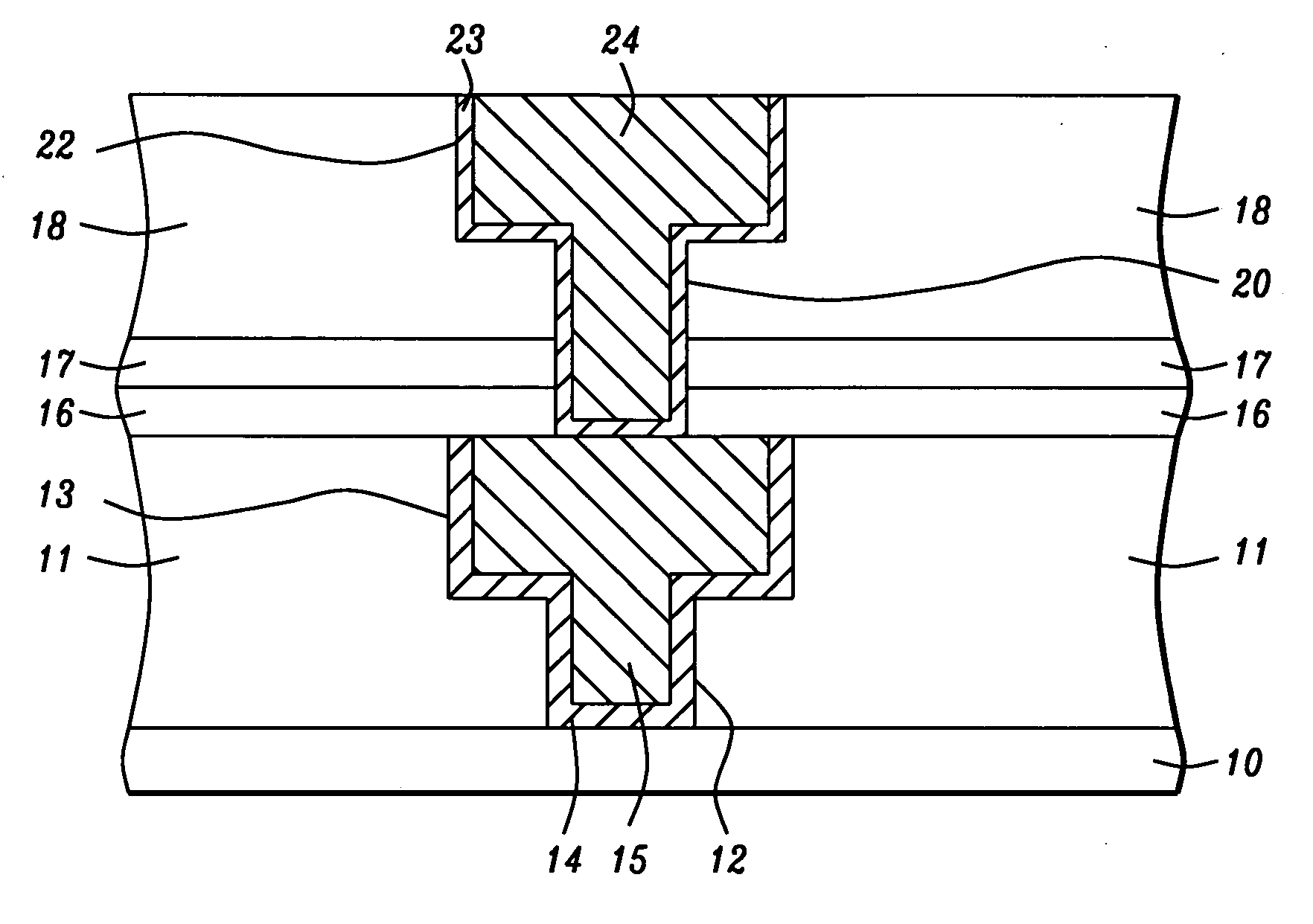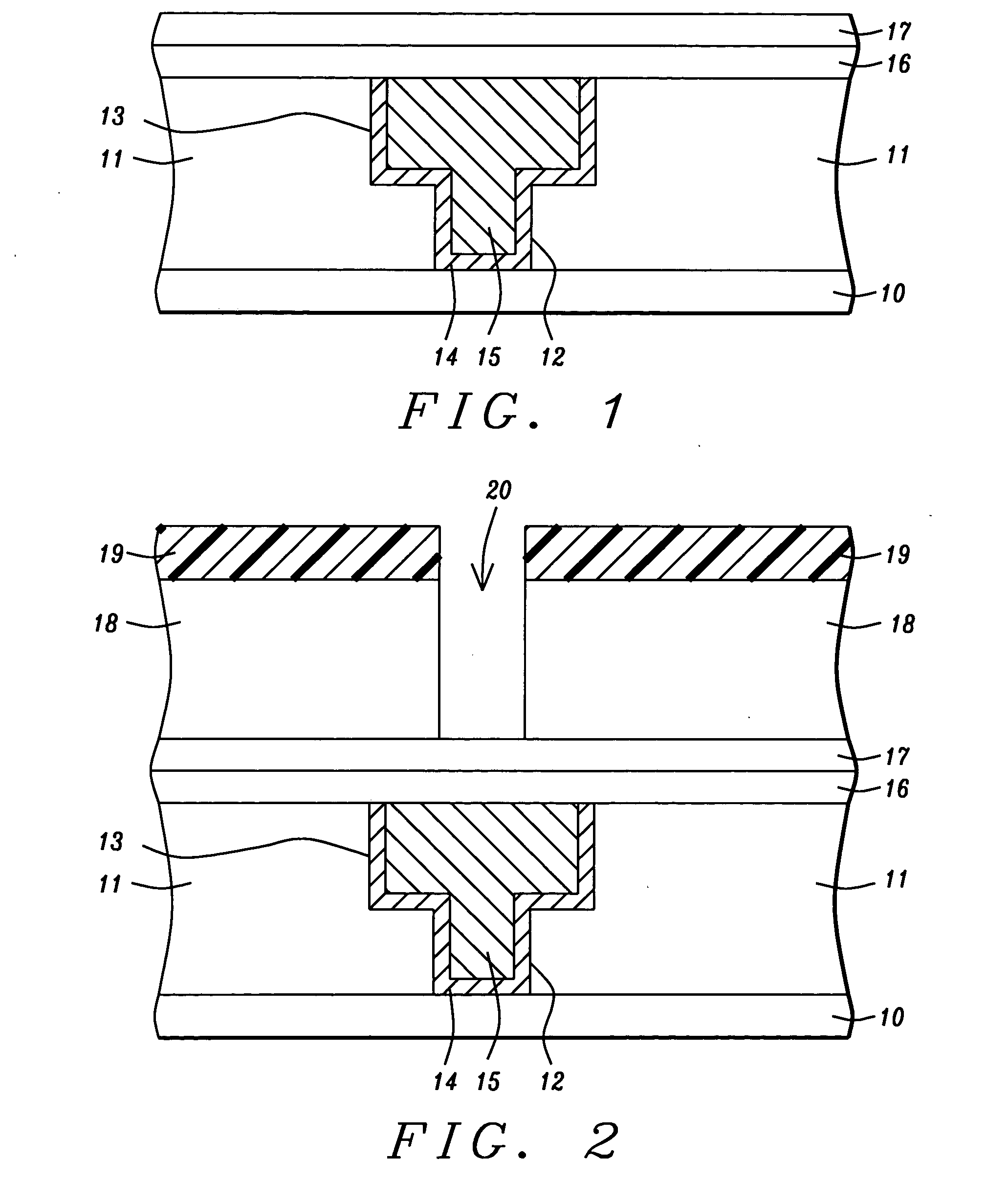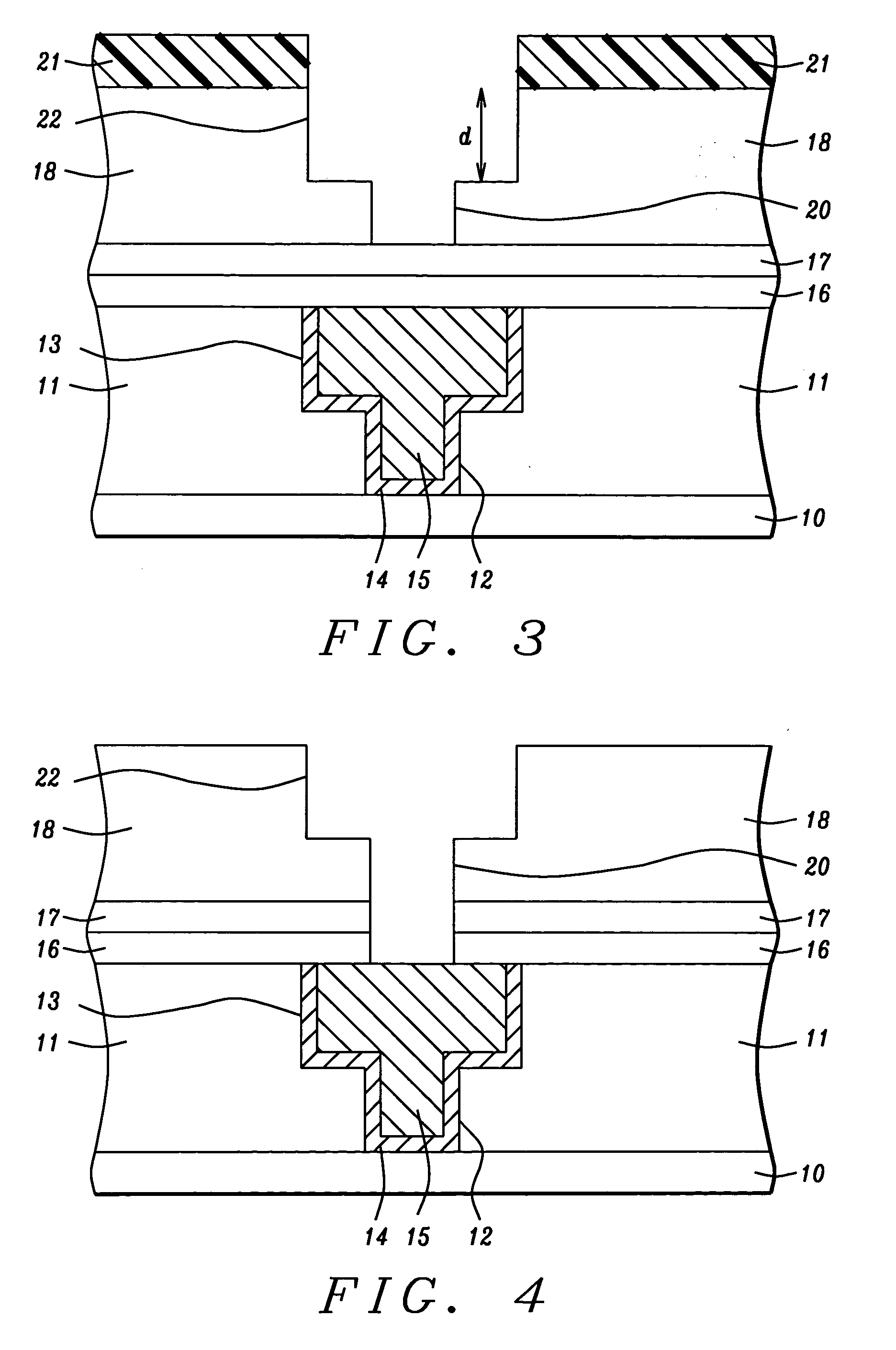Novel nitride barrier layer to prevent metal (Cu) leakage issue in a dual damascene structure
- Summary
- Abstract
- Description
- Claims
- Application Information
AI Technical Summary
Benefits of technology
Problems solved by technology
Method used
Image
Examples
Embodiment Construction
[0028] The present invention is particularly useful in forming a microelectronics device in which a conductive layer is formed on a copper layer and the device includes a composite barrier layer between the copper layer and an interlevel dielectric (ILD) layer. The composite barrier layer also serves as an etch stop layer in a damascene process flow. Although a dual damascene process is illustrated in the drawings, the composite barrier layer of the present invention may be formed on a substrate in a single damascene process or in other applications where a barrier layer also functions as an etch stop layer. It is understood that the drawings are provided by way of example and are not intended to limit the scope of the invention. In addition, the various elements within the drawings are not necessarily drawn to scale and the relative sizes thereof may be different than in an actual microelectronics device.
[0029] The invention will be described first in terms of a method of forming ...
PUM
 Login to View More
Login to View More Abstract
Description
Claims
Application Information
 Login to View More
Login to View More - Generate Ideas
- Intellectual Property
- Life Sciences
- Materials
- Tech Scout
- Unparalleled Data Quality
- Higher Quality Content
- 60% Fewer Hallucinations
Browse by: Latest US Patents, China's latest patents, Technical Efficacy Thesaurus, Application Domain, Technology Topic, Popular Technical Reports.
© 2025 PatSnap. All rights reserved.Legal|Privacy policy|Modern Slavery Act Transparency Statement|Sitemap|About US| Contact US: help@patsnap.com



